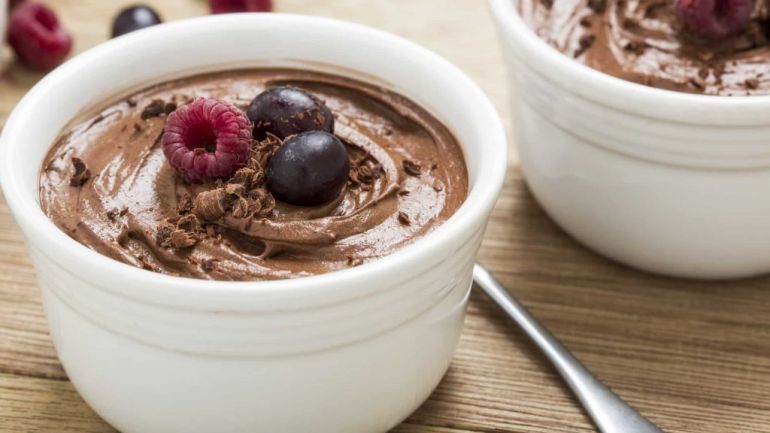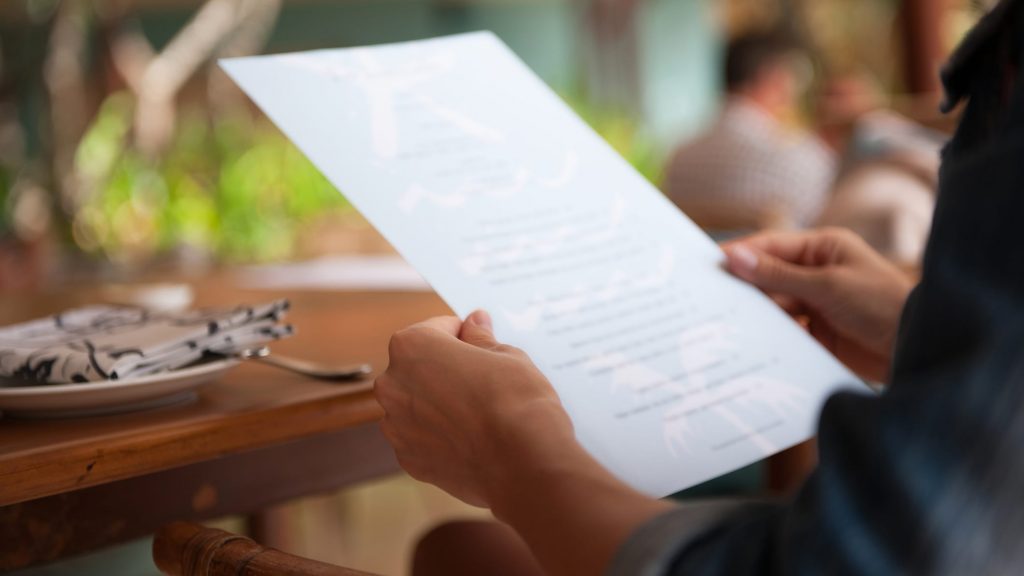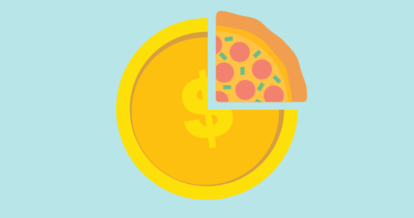The average restaurant spends between 20 and 40% of its revenue on food.
With so many other operational expenses for restaurants – like labor, rent, utilities, and marketing – food cost takes up a large chunk of that cash! Do you know how much your restaurant spends on food?
Knowing your restaurant’s food cost percentage can help you make effective business decisions, like how much to charge for items on your menu for maximum profitability or when it’s time to look for new suppliers. By using a food cost formula to better understand your total food costs, you’ll be able to optimize profits and protect your bottom line.
In this article, we’ll help you learn:
- What food cost percentage means
- How to use a formula to calculate costs by meal and dish
- Why it’s important to calculate food cost percentage for your restaurant
- How to use food cost percentage to set menu prices
- How to make calculating your food cost easier

How to Calculate Food Cost Percentage
Want to master your restaurant’s finances and maximize profits for your business? It all starts with learning how to calculate restaurant food costs with a food cost formula.
What Is Food Cost Percentage?
Food cost percentage indicates what proportion of your money is spent on buying food and beverage supplies for your restaurant. Food cost can be calculated in several ways.
Total food cost percentage examines the cost of all food supplies at your restaurant and total revenue over a certain period of time. Think of total percentage food cost as your high school GPA. Your GPA was an overview of your academic performance, but didn’t give much insight into which subjects you excelled in or struggled with.
Food cost percentage per dish, on the other hand, is like your report card: a subject-by-subject breakdown of your success in the classroom. Perhaps you excelled at math (which we’re equating to a low percentage for your restaurant’s chicken piccata) but weren’t so great at history (a high percentage for your lamb roast).
You can use food cost information to reign in your overall food costs and uncover which dishes you could charge more for.
Food Cost Percentage Formula Calculation by Meal and Dish
Now that you understand total food cost percentage and cost per dish, here are the food cost formulas and how to calculate those numbers.
How to Calculate Food Cost Using a Food Cost Formula
Total Food Cost Percentage Formula for Cost Per Meal
Want to find out what fraction of your restaurant’s money is eaten up by food costs? Here’s the formula for total food cost percentage:
Total Food Cost Percentage = (Total Cost of Goods Sold / Total Revenue) x 100
Here’s a step-by-step look at how to implement this cost percentage formula:
1. Calculate your Total Cost of Goods Sold (CoGS).
Your Total Cost of Goods Sold is how much the food and beverages you’ve sold over a given period of time cost your restaurant. You can find that out with this cost percentage formula:
CoGS= [(Beginning Food and Beverage Inventory Value) + (Inventory Purchase Value)] – (Ending Inventory Value)
First, take stock of how much your current inventory costs. Then, add in the cost of new inventory you purchased during the time period in question. Finally, calculate the value of your inventory at the end of the time period in question and subtract that from the cost of the inventory at the beginning of that time period.
Example: We’ll refer to fictitious restaurateur Sandra and her business Chez Sandra throughout our examples. Sandra wants to know what her total food cost percentage was in December. She figures that her total inventory was worth $10,000 at the beginning of December and she spent an additional $4,000 on food and beverage supplies in December. At the end of the month, the total value of her remaining inventory was $6,000.
Value of Inventory of Food and Beverage at start of December: $10,000
Value of Inventory Purchases in December: $4,000
Value of Inventory at end of December: $6,000
Sandra’s Cost of Goods Sold would be = [(Beginning Food and Beverage Inventory Value) + (Inventory Purchases)] – (Ending Inventory) = [($10,000) + ($4,000)] – $6,000 = $14,000 – $6,000 = $8,000
Sandra used up $8,000 worth of food and beverage inventory in December, also known as her CoGS.
2. Calculate your Total Revenue for the time period you’re interested in examining.
Check your POS to see how much money your restaurant earned during the week, month, year you want to learn more about.
Example: Sandra checks her TouchBistro POS and learns that her restaurant earned $26,000 in Total Revenue in December.
3. Divide Total CoGS by Total Revenue.
Example: Sandra’s Total Cost of Goods Sold for December was $8,000 and her restaurant’s Total Revenue during that period was $26,000.
$8,000 / $26,000 = .30
4. Multiply your answer by 100 to reveal your Total Food Cost Percentage.
Example: .30 x 100 = 30%
Chez Sandra’s total food cost percentage in December was 30%.
You can apply this food cost formula to any time period you’d like – a specific week, month, year, etc.
Now, let’s dig deeper into the numbers required to calculate food costs per dish.

Calculating Actual Food Cost Percentage Per Dish Formula
Let’s say you want to understand how much a dish is costing you and the profitability of a specific item on your menu. You can use our free food cost calculator tool or the following formula to calculate how those costs work by breaking down a recipe:
Food Cost Percentage Per Dish = (Total Cost of Dish Per Serving / Price of Dish to Customer) x 100
Let’s examine how to calculate this more closely:
1. Calculate what it costs for you to make a dish (a.k.a. Total Cost of Dish).
Find out the prices of the ingredients in the dish in question and add them up to figure out how much one meal costs you to make.
Example: Chez Sandra serves a chocolate mousse as a special holiday menu item in December. The mousse has been selling very well, but Sandra is worried that the ingredients are too expensive – biting into her profit margins – for the mousse to become a permanent fixture on the menu.
To find out the mousse’s cost percentage per dish, Sandra makes a list of the ingredients in her mousse recipe: chocolate, cream, eggs, and sugar.
She then divides the ingredient quantities in her recipe by the number of servings the recipe yields to find out what quantity of each ingredient is needed to make just one serving of chocolate mousse. She finds out that one serving of chocolate mousse requires an ounce of chocolate, a quarter cup of cream, half an egg, and two teaspoons of sugar.
Sandra then calculates the food costs for each of these ingredients. Sandra buys four dozen eggs for $12 from her supplier. This means that half of a single egg would cost 16 cents.
Sandra calculates all of her other food costs and finds the Total Dish Cost for her chocolate mousse:
1 oz. chocolate – $2.50
¼ cup cream – $0.25
½ egg – $0.16
2 tsps sugar – $0.10
Total food costs for chocolate mousse per serving: $3.01
2. Find out Price of Dish to Customer.
This step is simple. Look at your menu. How much do you charge for this dish?
Example: Sandra charges $6.00 for her chocolate mousse. Therefore, Sandra’s Price of Dish to Customer is $6.00.
3. Divide Total Cost of Dish Per Serving by Price of Dish to Customer.
Example: The chocolate mousse costs $3.01 to make and sells for $6.00.
$3.01 / $6.00 = 0.5
4. Multiply your answer by 100 to find out your Food Cost Percentage Per Dish.
Example: 0.5 x 100 = 50%
The chocolate mousse has a 50% food cost percentage per dish. Should Sandra keep it on her menu? Let’s find out.
The Importance of Calculating Food Costs Percentage for Food Pricing
Knowing your actual food cost will enable you to make powerful decisions about menu pricing that will impact your bottom line.
Benefits of Calculating Actual Food Cost and Knowing How Much You Spend on Food
Here are a few reasons why knowing how much you’re spending on food is important.
Calculating your food costs can help you…
1. How Much You’re Spending on Food
Comparing your food cost to ideal restaurant benchmarks can help you determine whether your food spending is normal or needs to be adjusted. Check out these industry benchmarks for food cost to understand the ideal food percentage you should be aiming for.
| Food and Beverage Category | Industry Benchmark Food Cost % Range |
| Overall | 20 – 40% |
| Food | 25 – 40% |
| Non-alcoholic beverage | 10 – 30% |
| Wine | 30 – 50% |
| Draft beer | 20 – 40% |
| Bottled/canned beer | 30 – 35% |
| Liquor | 10 – 20% |
| Mixed drinks | 5 – 25% |
How do your actual food cost and food costs per dish compare to these industry benchmarks?
2. Understand the Profitability of Your Menu Items Through Food Costs
After you determine where the cost of your own food falls along ideal benchmarks, you’ll be able to understand the profitability of your dishes.
Let’s revisit our example with Sandra of Chez Sandra. Chez Sandra’s total food cost percentage of 30% is in a healthy range for the industry. However, the chocolate mousse’s 50% food cost percentage per dish is above the 25 to 40% industry standard range.
What does this mean? Sandra’s chocolate mousse is too costly of a dish by industry standards, and probably isn’t profitable enough to remain on the menu. If Sandra wants to introduce it as a permanent item on her menu, she should increase the mousse’s price or decrease the cost of the ingredients by finding more affordable suppliers without compromising quality.
We’ll explain how to use food cost information to help you determine how much to charge for dishes to ensure profitability.

Restaurant Food Cost: How to Use Food Cost Percentage to Set Food Prices
Knowing how your food cost percentage compares to ideal industry standards can help you determine whether you’re 1) underpricing menu items, 2) overpricing menu items (which could be why they’re not popular and leading to waste), or 3) overpaying for food.
Here’s the scoop on how to use food cost data to set custom menu prices that are both profitable for you and reasonable for guests.
First, calculate your food cost percentage per dish for every item on your menu. Then note which items (including beverages) fall above and below the industry benchmarks.
For menu items with a percentage above the ideal industry standard, we recommend:
- Increasing menu prices: Set a new price that lets you fall within the industry benchmark for cost percentage and see how the new price affects sales and the popularity of an item. If cost is prohibitive for customers, and they buy less, you should consider removing the item from your menu. From our example, Sandra could price her chocolate mousse in the $7.53 to $12.04 range to meet the industry benchmark of 25 to 40% for food cost percentage.
- Looking for new vendors: To decrease costs, look for vendors that can get you better prices on the items you use regularly. Ask friends in the industry for recommendations. If Sandra knew that customers wouldn’t spend more than $6 on chocolate mousse, she’d have to get the cost of her ingredients down to the $1.50 to $2.40 per serving range to be profitable.
For menu items whose food cost is below the ideal food cost for the industry we recommend:
- Increasing menu prices: You’re leaving money on the table! Increase menu prices gradually and see how customers respond by watching sales data carefully.
Even if menu items fall within the ideal food cost for the industry, there is room to optimize profitability. You can consider:
- Increasing menu prices: If you’re on the high end of the benchmark (ex: 40% for food items) see if you can reduce the ratio to the lower end (25%). Imagine what a 15% decrease in food cost could mean for your bottom line if sales remain steady.
- Looking for new vendors: Again, see if you can negotiate lower prices with your current vendors or look for new vendors that can offer you lower pricing on food and beverage items to optimize your food cost percentage.
If these options don’t work for you, consider redesigning the layout of your menu. Menu optimization is proven to increase profits by 10 to 15%.
Another option is to reduce portion sizes and keep actual prices the same so that you decrease your cost per serving and reduce any waste.
Food Cost Control and How to Make Managing Food Costs Easier
Calculating your food cost can be tedious. You have to keep track of your inventory, look through invoices to track food costs, and check reports to see how much your business brought in in sales. Even the most organized restaurateur would find this calculation nightmarish.
Fortunately, tech is making food cost control and managing ingredient costs easy. Beyond serving as your digital cash register, a restaurant POS can calculate food cost percentages, cost of goods sold, cost per item per dish, and more. You can know your food cost percentage and margins within a few seconds, rather than figuring them out the old-school way.

Stay on top of expenses and manage costs with this restaurant budget template for Excel or Google Sheets.
Knowing your food cost numbers will do wonders for your bottom line. When you know how much a menu item costs your restaurant to make, it can help you optimize menu prices to boost your profit margins. The more you know about your restaurant’s finances, including food percentage cost, cost of goods sold, and prime costs, the easier it is for you to make actual decisions about the food you buy, pricing, marketing, and hiring.
Download our free inventory template
Sign up for our free weekly TouchBistro Newsletter







